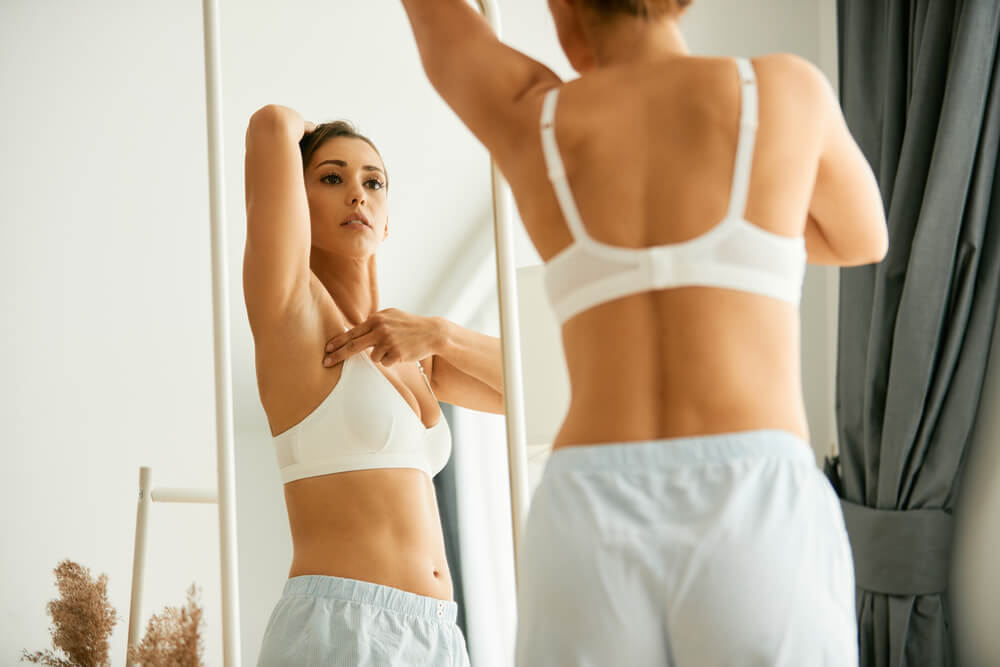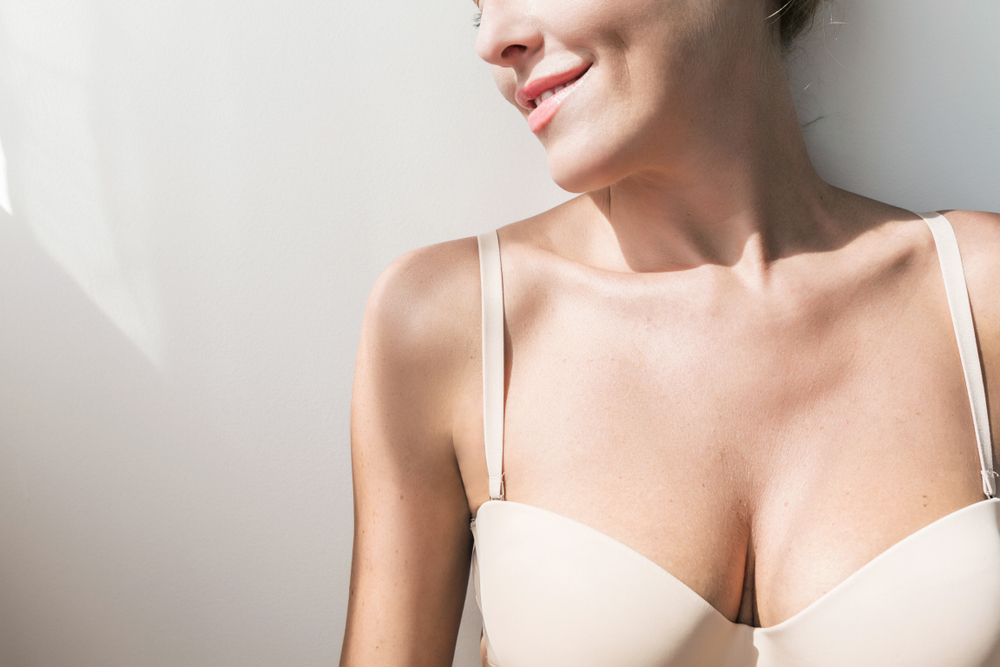
As we welcome Breast Cancer Awareness Month, you should know that breast cancer is the second most diagnosed cancer in Australia, with over 20 000 new cases each year.
While breast cancer cannot be prevented, treatment outcomes are far more successful if it’s caught early. Regularly checking your breasts for any changes can make a big difference in how soon you are diagnosed.
Getting to know how your breasts usually feel is incredibly important. Familiarising yourself with how your breasts feel on a day-to-day basis will make it much easier to notice when there are any changes. Some women, for example, have very fibrous breast tissue, so they may feel some lumps and bumps every time they check their breasts. Knowing your breasts will enable you to tell what’s new and what’s normal for you.
Signs and Symptoms of Breast Cancer
One of the most common reasons for seeking a breast cancer diagnosis is the discovery of a lump in the breast tissue. These lumps will feel distinctly more solid than the rest of your breast tissue and may or may not be painful. Other signs to keep an eye out for include changes to the shape and size of the breast, a change in skin texture, or changes in the nipple. Therefore, it’s so important to be familiar with your breasts before doing your at-home check. ‘Orange peel’ skin or a scaly appearance could indicate something amiss, while sores, crusting, or discharge from the nipple are also signs of concern.
It is, however, important to remember that there are many possible reasons for a change in your breasts. If you notice any significant changes, you should see a doctor for a complete breast exam. If you are nervous about the exam, go with a friend, family member, or your partner.
How to Check Your Breasts At Home
To conduct an at-home breast check, you should remove all the clothing above your waist and lie down. This will help to spread your breasts out evenly, making it easier to feel for lumps. Start by using the pads of three middle fingers to feel for lumps or changes in texture, moving from your collarbone toward the bottom of your bra line, including your armpit. Make sure to alternate the two breasts and use a spiral pattern to check for any irregularities.
During the breast exam, you should use different pressure levels to feel for any lumps or thickening in the breast. A light touch will be enough to feel tissue close to the skin, while medium to firm pressure will allow you to feel deeper tissue. Make sure you do not lift your finger too high or too low off the skin.
When Should I Check My Breasts?
Because your breasts change during your menstrual period, it is recommended that you wait until just after your period to do your at-home breast exam. Your breasts can be more sensitive and feel different during your period due to hormonal fluctuations, so it is suggested that you choose a day roughly a week after the end of your period to do your exam.
According to women’s health experts, breast exams should be done at least once a month. If you notice changes in your breasts, make an appointment with your OB/GYN or primary care physician as soon as possible. These providers will order further tests, such as a mammogram or an ultrasound. However, remember that not all breast changes indicate cancer. While waiting for test results can be terrifying, try not to panic if you notice anything unusual or concerning in your breast during your self-exam.
How Can We Help?
As a specialist plastic and reconstructive surgeon, Dr. Sophie Ricketts provides many different options for breast surgery.
Even if an entire breast was removed (for example, to treat or prevent cancer, or as a result of other trauma), there are many options for performing a successful breast reconstruction. Many types of reconstructive surgery exist, and each case is unique. Generally, rebuilding the breast after mastectomy may involve breast augmentation, followed by nipple and areola re-creation where necessary. In some cases, breast reconstruction surgery also involves the other breast, so that the two breasts can be matched in shape and size.
Sometimes, the treatment plan allows to perform immediate breast reconstruction at the time of the mastectomy. However, you may be relieved to know that delayed reconstruction, months or even years following surgery, is also a possibility.
Dr. Sophie Ricketts gets great satisfaction from helping patients to feel comfortable and confident in their bodies, especially following a traumatic event such as a cancer diagnosis and grueling treatment regime.
To find out more about breast surgery options, please see here.
To arrange a consultation with Dr. Sophie Ricketts, please have a look here.

